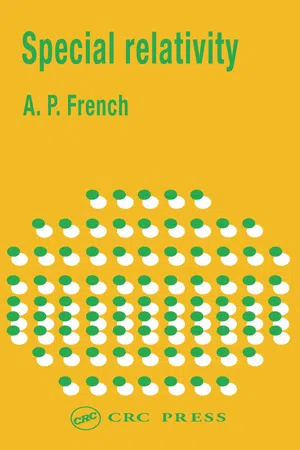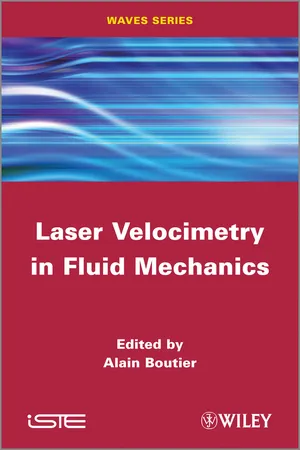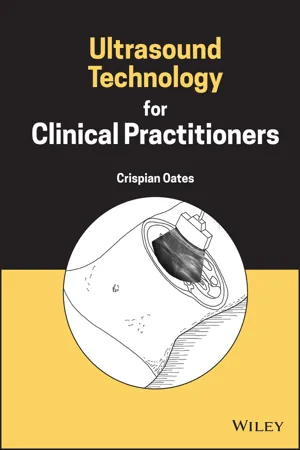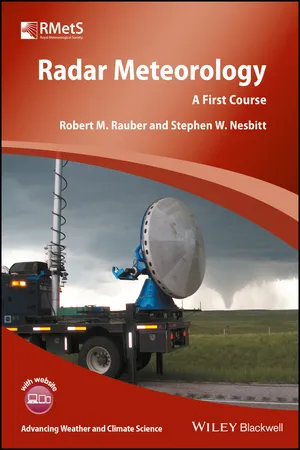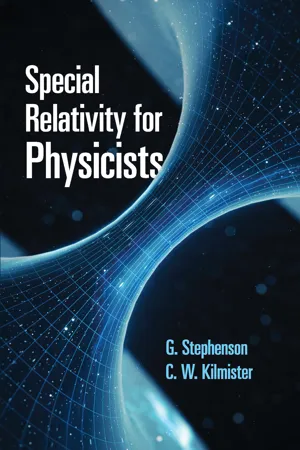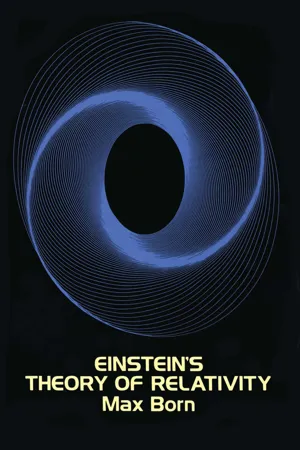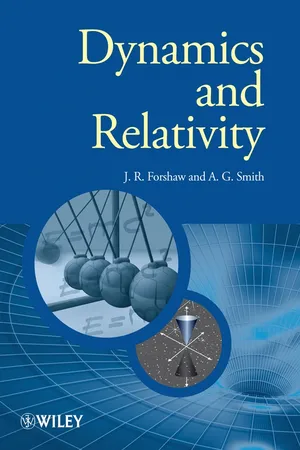Physics
Doppler Effect in Light
The Doppler effect in light refers to the change in frequency or wavelength of light waves as a result of relative motion between the source of the light and the observer. Similar to the Doppler effect in sound, this phenomenon causes a shift in the perceived color of the light, with the light appearing more blue if the source is moving towards the observer and more red if it is moving away.
Written by Perlego with AI-assistance
Related key terms
Related key terms
1 of 4
Related key terms
1 of 3
7 Key excerpts on "Doppler Effect in Light"
- eBook - ePub
- A.P. French(Author)
- 2017(Publication Date)
- CRC Press(Publisher)
Doppler effect embraces all aspects of this phenomenon whereby the observed frequency or wavelength of a periodic disturbance is modified. The effect is named after Christian Doppler, who enunciated the essential principles of it in 1842, in connection with atomic spectroscopy.Everyone is familiar with the acoustical Doppler effect—e.g., in the sudden drop in pitch of a siren on a car as the car passes by. In this case there is an identifiable medium—the air—and we have physically distinct situations according to whether it is the source or the observer (or both) that moves with respect to the medium. With light in vacuum there is no such distinction, so the discussion of the phenomenon is in a way simpler. It may be useful, nevertheless, to begin with a reminder of the acoustical Doppler effect.Consider a one-dimensional problem in which a source S and a receiver R are moving along the same line (Fig. 5-4 ). Relative to the air, let the speeds of S and R be u 1 and u 2 , respectively. Let the source be emitting a signal of frequency ν and period τ (= 1/ν ). To make the discussion especially simple, we shall assume that the signal is in the form of very brief pulses separated by τ . Each pulse travels through the air at the speed of sound, w . Suppose that a pulse P 1 is emitted at time t = 0, and a second pulse P 2 at t = τ , as shown. During the time τ the pulse P 1 travels a distance wτ and the source S moves a distance u 1 τ . Thus the distance between P 1 and P 2 , which we can call the effective wavelength λ ′ (although strictly this term should be reserved for pure sine waves), is given byλ ′(τ =w −)u 1w −vu 1Fig. 5-4 Doppler effect for radiation from a moving source. (a) A first pulse leaves the source at t = 0. (b) A second pulse leaves the source at t = τ. The motion of the source is such that the distance between pulses is less than if the source were stationary. - eBook - ePub
- Alain Boutier(Author)
- 2013(Publication Date)
- Wiley-ISTE(Publisher)
3.2. Basic idea: Doppler effect3.2.1. Double Doppler effect
We assume that the illumination source is a laser: we shall justify this choice later when discussing formulas. The laser beam (emitting an optical frequency f 0 ) and the observer (which will be a photodetector) are stationary in the laboratory.In a first step the moving particle is a mobile observer relative to a stationary laser beam source. Due to the Doppler effect it receives a frequency f p slightly different from f 0 .In a second step, the moving particle, which is thus a mobile source, emits the frequency f p towards the stationary observer, which receives another frequency f due to a second Doppler effect. We compute f as a function of f 0 , the velocity vector, , and the geometry of the system defined by two unit vectors: along the direction of laser beam and along the direction of observation.3.2.1.1. Fixed source, mobile observerA laser beam of frequency f0 in a vacuum propagates along a unit vector in a medium having a refraction index n . The wavelength in the medium is:where c is the speed of light (c = 3 × 108 m/s).Figure 3.1.Doppler effect: fixed source, mobile observerLet T 0 = f 0 –1 be the period of radiation in the vacuum; wavelength λ = cT 0 /n represents the distance between two successive wavefronts O 1 O 2 . At initial instant t 1 ; the particle (mobile observer) is at O 1 and meets a wave 1 emitted by the source. Then particle moves at a velocity to meet the next wave 2 at instant t 2 (see Figure 3.1 - eBook - ePub
- Crispian Oates(Author)
- 2023(Publication Date)
- Wiley(Publisher)
8 Principles of Doppler UltrasoundTHE DOPPLER EFFECT
The Doppler effect is the change in the detected frequency of a sine wave when there is relative motion between the transmitter and the receiver. This will occur for all wave phenomenon. It is the change in pitch you hear when a motor bike races past you. The pitch is higher as it comes towards you and drops to a lower pitch as it moves away.NOTE
For historical reasons and as it is the name of a person, Christian Doppler, who first described the effect, ‘Doppler’ is always spelt with a capital ‘D’.To see why there is this change in received frequency, consider the example of a boat rowing towards a source of waves on a lake (Figure 8.1 ). It will intercept those waves more rapidly than if the boat was stationary. If it were being rowed away from the source, the boat would intercept the waves at a lower frequency. If the boat was stationary, it would bob up and down at the same rate as the waves were being generated.In this case, the source of waves is stationary and the boat is a moving receiver.When a fire engine passes you at speed, with its sirens sounding, you hear a change in the pitch or frequency of the sound. The frequency is higher as it comes towards you and lower as it moves away. In this case, the fire engine is a moving transmitter and you are a stationary receiver.Illustration of a boat moving at velocity ‘v’ encountering wind‐blown waves moving at velocity ‘c’.FIGURE 8.1It doesn’t matter which is moving and which is stationary; it is the relative motion between the transmitter and receiver that causes the Doppler effect.In the case of clinical ultrasound, the Doppler effect will occur when there is relative motion between an echo target and the transducer, e.g. moving blood or cardiac wall. We can use this phenomenon to non‐invasively detect movement and measure velocities of targets within the body. - eBook - ePub
Radar Meteorology
A First Course
- Robert M. Rauber, Stephen W. Nesbitt(Authors)
- 2018(Publication Date)
- Wiley-Blackwell(Publisher)
Chapter 6 Radial Velocity—The Doppler EffectObjectives
By the end of this chapter, you should understand the following:- The Doppler effect, and how a Doppler frequency shift occurs.
- What is meant by radial velocity, and the relationship between radial velocity and the Doppler frequency shift.
- Why Doppler radars use pulse-to-pulse phase changes to measure radial velocity.
- Why Doppler radars can only measure radial velocity within a finite range.
- The Doppler dilemma and techniques to circumvent it.
- What is meant by a Doppler spectrum.
- The relationship between a Doppler spectrum and its moments.
- The pulse-pair processor algorithm to obtain Doppler spectral moments.
6.1 Introduction
Have you ever heard a train blow its whistle as it approaches and then moves away from you—although the train's sound is the same, you hear a high pitch on approach and a lower pitch on departure. On approach, sound waves are compacted because they and the train are moving in the same direction. Successive waves travel shorter distances, compressing their arrival times and increasing the frequency with which they pass a stationary observer. As the train moves away, sound waves still move toward the observer but are stretched because the train and the waves are moving in opposite directions. In this case, the frequency is decreased, lowering the pitch. The faster the train is moving, the greater the frequency shift a stationary observer hears. The frequency change is called the Doppler frequency shift after the Austrian physicist Hans Christian Doppler, who first explained the phenomenon.Microwaves emitted by radar also undergo a very slight frequency shift when they are scattered by raindrops or other targets moving toward or away from the radar. As with sound, the shift is toward higher frequencies when the targets are moving toward the radar and lower frequencies when they are moving away. The faster the targets move, the greater the frequency shift will be. A Doppler radar determines the Doppler frequency shift by measuring the phase of electromagnetic waves returned from a series of microwave pulses. From the pulse-to-pulse phase change, the radar determines the radial velocity, defined as the reflectivity-weighted velocity along the direction of the beam of all the targets within a pulse volume. As Figure 6.1 shows, the radial velocity represents a single component of motion of the targets, specifically the radial component; Doppler radars cannot detect the tangential components of target motion perpendicular to the radar beam. There are in fact four components to target motion, assuming that the targets are meteorological and move with the wind. These are the east–west wind component (u), the north–south wind component (v), the up–down wind component (w), and the target's terminal velocity in still air (wt - eBook - ePub
- G. Stephenson, C. W. Kilmister(Authors)
- 2019(Publication Date)
- Dover Publications(Publisher)
3 OPTICAL AND DYNAMICAL APPLICATIONS OF THE LORENTZ TRANSFORMATION1 . The Doppler EffectWe shall now consider the theory of a light wave emitted by a source moving with uniform velocity ν relative to an observer O. If the source is supposed to be at rest in a coordinate-system 5", then an observer at O', the origin of S', describes a monochromatic plane wave emitted from the source as being proportional towhere ν' is the frequency and e’ is a unit vector in the direction from O' to the source. Similarly, O describes the wave as proportional toSince the exponent must be invariant under the Lorentz transformation (Chapter 2 , (1.1)) ,This must be true for every value of t and for all values of the position vector r. Therefore, equating the coefficients of t and r on both sides and using the obvious identity a·bt †We may take, without loss of generality,b·a† ,we findFIG. 5.(see Fig. 5 ). Then (1.1) is equivalent toThe formulae (1.1) and (1.2) give the apparent frequency and direction of a light source which is moving uniformly relative to the observer O.Two important special cases are: (a) The Radial Doppler EffectWhen the source Ρ is receding directly from the observer Ο along the x -axis, we have θ = θ’ = 0 and consequentlyThe corresponding classical expression for this case isand it is clear that (1.3) and (1.4) agree to the first order terms in v/c. The relation (1.3) shows a shift of the light towards the red (low frequency) end of the spectrum.When the source is moving directly towards the observer, θ = θ’ = π, and we havegiving a shift towards the blue end of the spectrum. The corresponding classical expression again agrees to the first order in v/c.The classical expression (1.4) is derived for a source receding with a velocity v from an observer. If an observer is receding with a velocity ν from the source, the classical theory gives the result ν = v' (1 — v/c ). This also agrees with (1.3) to the first order terms in v/c, but the existence of two classical formulae depending on whether the source or the observer is moving implies a standard of absolute rest, and, hence, a fixed aether (Chapter 1 , §§ 3 , 4 - eBook - ePub
- Max Born(Author)
- 2012(Publication Date)
- Dover Publications(Publisher)
ß. In this sense we may assert the following:The Doppler effect depends only on the relative motion of the source of light and of the observer if quantities of the second order are neglected.If we assume a simultaneous motion of the source of light (velocity v0 ) and the observer (velocity v), the observed frequency is obtained by inserting (43 ) in (41 ):If the source of light and the observer have the same velocity v0 = v, this becomes precisely equal to 1 and we get Thus the observer notices nothing of a common motion with the source relative to the ether. But as soon as v differs from v0 , a Doppler effect appears. In the first order it depends only on the difference v — v0 , but this does not hold if one includes terms of second order. Hence the motion relative to the ether could be observed, if the difference were not of the second order and hence were not much too small to be measured.We see that the Doppler effect gives no practical method of establishing motions with respect to the ether in astronomic space.Fig. 71 Vacuum tube with cathode K and anode A. Charged atoms and molecules pass with large velocities through the hole in the cathode to the left.The optical Doppler effect has been detected with terrestrial sources of light. To do this required sources of light moving with extremely great speed in order that the ratio might attain a perceptible value. For this purpose J. Stark (1906) used the so-called canal rays. If two electrodes are fixed in an evacuated tube containing hydrogen of very small density, and if one of the electrodes is perforated and made the negative terminal (cathode) of an electric discharge (Fig. 71 ), we get, first, the so-called cathode rays which start at the cathode, and second, as Goldstein discovered in 1886, a reddish luminescence penetrating through the hole or holes of the cathode, due to positively charged hydrogen atoms or molecules moving at a great speed. The velocity of these canal rays is of the order v= 108 cm./sec., thus ß - eBook - ePub
- Jeffrey Forshaw, Gavin Smith(Authors)
- 2014(Publication Date)
- Wiley(Publisher)
t . Therefore the perceived time interval between the start and the end of the tick is(6.8 )It is very important to be clear that this extra slowing down of the clock is an ‘optical illusion’, in contrast to the time dilation effect which is a real slowing down of time. To emphasise this point, if light travels at a finite speed then moving clocks will appear to run slow even in classical theory such that Δt see = Δt ′(1 + v/c ).Eq. (6.8) leads us on nicely to the Doppler effect for light. Let us consider the situation illustrated in Figure 6.4 . A light source is at rest in S ′ and is being watched by someone at rest in S . The time interval Δt ′ could just as well be the time between the emission of successive peaks in a light wave, i.e. the frequency of the wave is f ′ = 1/Δt ′. The person watching the light source will instead see a frequency f = 1/Δt . The two frequencies are related using Eq. (6.8) :Figure 6.4 A light source of frequency f ′ at rest in S ′(6.9 )This is the result in the case that the light source is moving away from the observer, in which case Eq. (6.9) tells us that f < f ′ and so the light appears shifted to shorter frequencies, i.e. it is ‘red-shifted’. If the source is moving towards the observer we should reverse the sign of v in Eq. (6.9) and therefore conclude at f > f ′, i.e. the light is now ‘blue-shifted’.Example 6.1.2 How fast must the driver of a car be travelling towards a red traffic light (λ = 675 nm ) in order for the light to appear amber (λ = 575 nm )?Solution 6.1.2 In the rest frame of the car, the traffic light is moving towards them at a speed u. Our task is to determine u given the change in wavelength. We can convert wavelengths to frequencies using c
Index pages curate the most relevant extracts from our library of academic textbooks. They’ve been created using an in-house natural language model (NLM), each adding context and meaning to key research topics.
Explore more topic indexes
Explore more topic indexes
1 of 6
Explore more topic indexes
1 of 4
